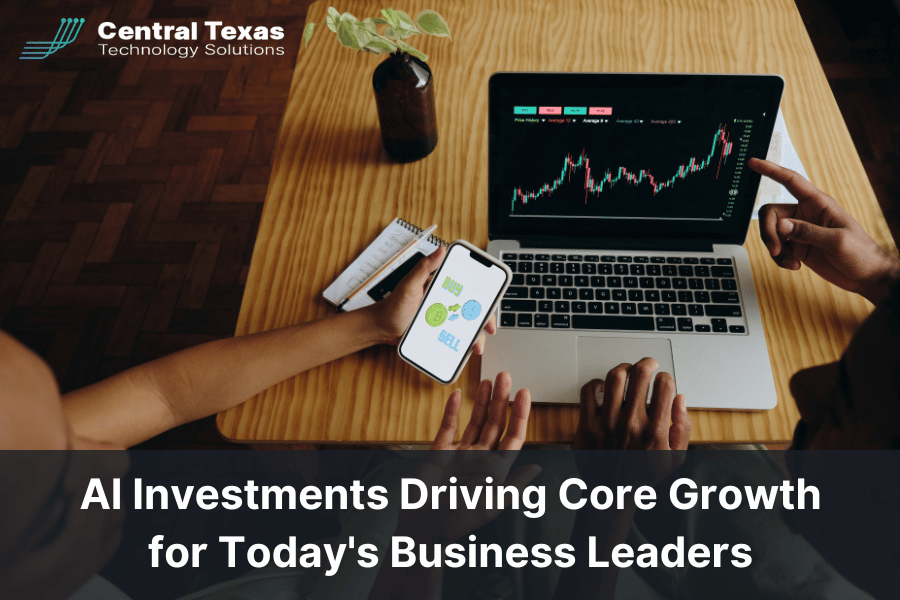
As businesses face increasingly competitive and rapidly evolving markets, many are turning to AI as the key to unlocking growth, innovation, and efficiency. Industry leaders recognize AI not as a passing trend but as a game-changer that will help companies lead, adapt, and foster sustainable growth. By strategically investing in AI, businesses are positioning themselves to stay ahead of the curve.
Strategic AI Investments Gain Momentum Among Executives
AI is no longer a speculative investment — it's a strategic priority for many executives in 2025. According to recent reports, 72% of business leaders are preparing to integrate AI into their operations this year, signaling a decisive shift toward full adoption. This marks a significant transition from experimentation to execution, with clear strategies and allocated budgets driving the change.
The growing consensus among industry leaders is clear: AI is vital to the future of business. It’s expected to reshape day-to-day operations, transform standard workplace tools, and support specialized tasks across industries. However, the success of these AI investments depends largely on how well companies plan, execute, and manage the integration of AI technologies.
How AI is Transforming Multilingual Business Operations
For companies expanding globally, communication can be a barrier to success. Poor communication, particularly in multilingual environments, can cause delays, misunderstandings, and missed opportunities. According to DeepL CEO Jarek Kutylowski, over 50% of C-suite executives waste more than an hour daily due to ineffective communication. This challenge is especially prominent in international markets, where language barriers complicate everything from customer service to market expansion.
AI investments in language processing are gaining significant traction, with 25% of leaders planning to integrate AI into their translation work. AI-driven translation tools can help businesses navigate language obstacles quickly and efficiently, cutting down translation times from hours to mere minutes. As more businesses in countries like the U.S., Germany, and France adopt AI-driven solutions, the role of AI in multilingual operations is expected to expand significantly.
What AI-Driven Business Transformation Could Look Like
The world of business has already undergone major transformations — the internet, for instance, revolutionized industries, reshaped markets, and changed the way companies communicate with their customers. Early adopters like Amazon and Google, which leveraged the internet to build billion-dollar empires, show that embracing new technologies is crucial for success.
AI represents the next major technological revolution, with transformative potential across core business functions. Here’s how AI investments can shape the future of business:
-
Streamlining Operations: AI helps automate repetitive tasks, reducing errors and freeing up valuable time for employees. AI-powered chatbots, for example, can handle customer queries 24/7, ensuring prompt service and allowing customer service teams to focus on more complex issues.
-
Personalizing Client Experiences: AI analyzes data to offer personalized solutions that meet individual needs. From tailoring shopping experiences to delivering targeted ads, businesses can use AI to make customers feel understood, boosting loyalty and customer satisfaction.
-
Supporting C-Suite Decision-Making: AI-driven tools are already helping executives make more informed decisions. Predictive analytics can forecast market trends, while AI can optimize supply chains to reduce costs and improve efficiency.
-
Enhancing Specialized Tasks: AI is also changing the landscape of highly specialized roles. From medical diagnostics to fraud detection and advanced engineering simulations, AI is assisting professionals in performing complex tasks more efficiently and accurately.
Overcoming the Challenges of AI Adoption
While the benefits of AI are clear, there are still challenges standing in the way of widespread adoption. One of the primary hurdles is the upfront cost of implementing AI tools, which can be significant. Additionally, many businesses face a steep learning curve as their teams need training to effectively use new AI technologies.
Integrating AI into existing business systems is another challenge. The process can be time-consuming and requires careful planning to ensure seamless adoption. Despite these obstacles, companies that successfully overcome them are well-positioned to reap the long-term benefits of AI investments.
Why AI Investments Are Key to Future Business Growth
With the potential to drive operational efficiency, enhance customer experiences, and support better decision-making, AI investments are critical for businesses aiming for sustainable growth. Early AI adopters like Amazon and Google set the stage, but now it’s time for companies across industries to follow suit. As more businesses integrate AI into their core functions, those that delay adoption may find themselves falling behind.
By planning AI investments carefully and strategically, today’s business leaders are laying the groundwork for future growth, innovation, and a competitive edge in an increasingly digital world.
FAQ: AI Investments and Business Growth
1. What types of businesses benefit most from AI investments?
Businesses across various sectors, from e-commerce to healthcare and manufacturing, can benefit from AI investments. Companies that require extensive data analysis, customer service automation, or global communication are particularly well-positioned to see significant returns.
2. What are the most common challenges businesses face when adopting AI?
The most common challenges include high upfront costs, the need for employee training, and the complexity of integrating AI with existing systems. However, businesses that successfully address these challenges stand to gain significant advantages in efficiency and competitiveness.
3. How long does it take for businesses to see a return on their AI investments?
The timeline for ROI depends on the scope of the AI implementation. For example, smaller AI solutions, like chatbots, may offer immediate benefits, while more complex AI systems may take several months or even years to show a clear return on investment.
Contact CTTS today for IT support and managed services in Austin, TX. Let us handle your IT so you can focus on growing your business. Visit CTTSonline.com or call us at (512) 388-5559 to get started!
